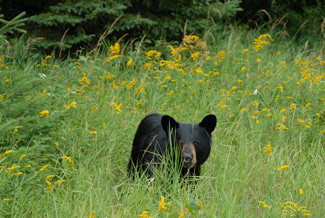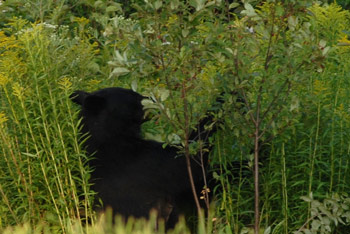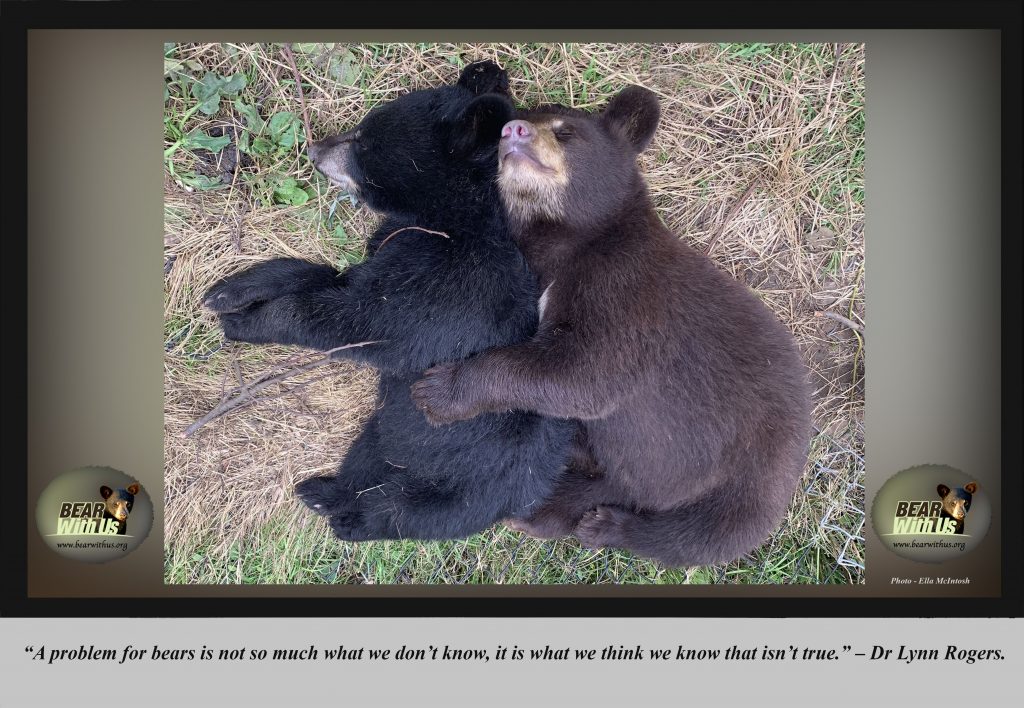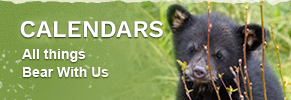Understanding Bears
 The black bear’s uncanny sense of smell serves not only as an early warning system but also as a tool for finding the fruit, nuts, plants, and insect larvae that are their preferred foods. Their vision is sharp, and they use sight as much as smell to quickly select foods.
The black bear’s uncanny sense of smell serves not only as an early warning system but also as a tool for finding the fruit, nuts, plants, and insect larvae that are their preferred foods. Their vision is sharp, and they use sight as much as smell to quickly select foods.
They have color vision, which might explain why bears do most of their foraging for fruit in daylight. They have a reflector system in their eyes that brightens night images and gives them their eye shine. Their night vision allows them to feed on garbage or campers’ food at night to avoid people. Black bears are quick to learn new feeding methods and have an excellent memory of feeding areas.
Black bears are classified as members of the order Carnivora, and their teeth, claws, strength, and size make them look like predators. However, they seldom catch anything larger than insects. Their blocky bodies, designed for storing fat and conserving heat in the winter, lack the agility required to catch healthy, adult prey. The few prey they catch are mainly nestling birds, newborn mammals, penned livestock, or spawning fish.  Their long canine teeth are used mostly for biting into insect-ridden logs or for tearing apart carrion. Their claws are tightly curved for tree-climbing, unlike grizzly claws, so black bears have an advantage over grizzly bears, deer, and wild hogs when competing for acorns, nuts, and fruits. But black bear claws are not well suited for digging as are the long claws of grizzlies. Black bears almost never dig out ground squirrels like grizzlies do. The digging is mostly limited to making dens and getting insects or tubers from just below the ground surface.
Their long canine teeth are used mostly for biting into insect-ridden logs or for tearing apart carrion. Their claws are tightly curved for tree-climbing, unlike grizzly claws, so black bears have an advantage over grizzly bears, deer, and wild hogs when competing for acorns, nuts, and fruits. But black bear claws are not well suited for digging as are the long claws of grizzlies. Black bears almost never dig out ground squirrels like grizzlies do. The digging is mostly limited to making dens and getting insects or tubers from just below the ground surface.
For the first few weeks of spring, the primary diet is leaves, buds, flowers, and young plants. Black bears digest mainly the tender, juicy plant parts. They cannot digest the tougher cellulose portions of plants because bears lack the necessary rumen, cecum, and intestinal microorganisms.  Insect larvae, fruit, nuts, and acorns are more digestible and are critical to black bear survival and reproductive success.
Insect larvae, fruit, nuts, and acorns are more digestible and are critical to black bear survival and reproductive success.
A problem for bears living in northern evergreen forests is that fruits and nuts are very scarce after August. Acorns, beech nuts, and hickory nuts, which are fall foods, are scarce or absent in many of those forests, leaving the bears little nourishing food in fall. As a result, bears in those areas take years longer to reach maturity than do bears that can grow and fatten in fall. Most females in northern evergreen forests do not produce cubs until 5 to 8 years of age, while those in hardwood forests usually produce their first cubs at 3 or 4 years of age.

Credit: University of Minnesota – Dr. Lynn Rogers . Photos – Mike McIntosh


